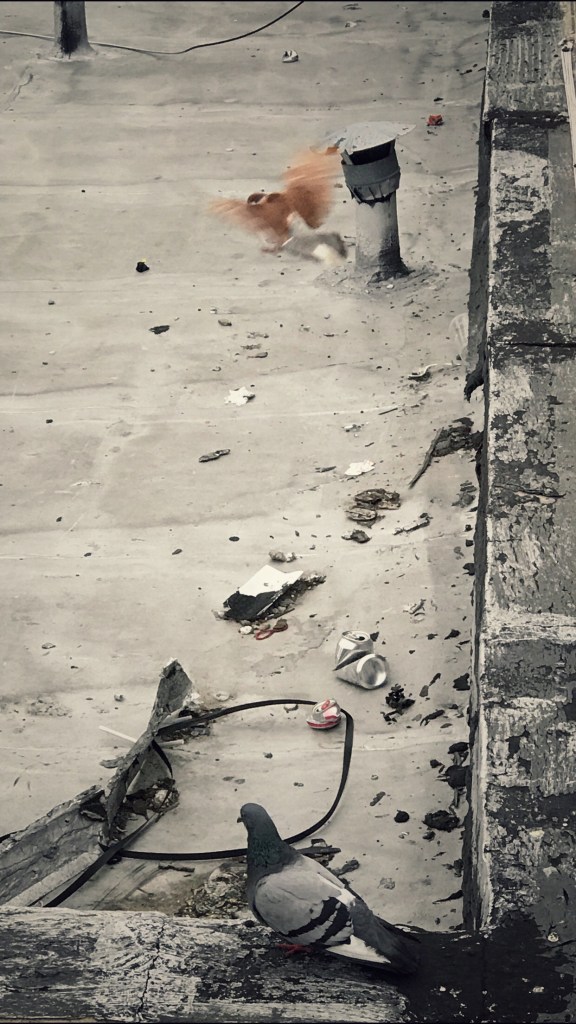
“It was all change until the very last second.”
Verlyn Klinkenborg, Several Short Sentences About Writing
Recently I was getting a track ready for release. Usually this involves revisiting music finished some time ago. I find it helpful to let time pass between a first draft and its subsequent edits so I can forget about having done it and hear afresh whether what once excited me about the music still does.
I opened the file (from August) and listened to the mix. It still had a mood I liked, but sounded somewhat sterile; its soundscape was all mid-range frequencies and one-dimensional. I thought I could improve the mix and began making adjustments here and there to track volumes and effects automation. Making these adjustments took a day—which isn’t long, but long enough to feel I did something. I bounced down the mix and listened to it, side by side with the original.
•
It sounded worse. Despite what I thought were well-considered adjustments, the music sounded squashed (i.e. over-compressed) and overloaded. The mid frequencies were less harsh, yes, but somehow the music was duller overall. My work had made the music sound dead.
My first reaction to this failure was to declare the music not so good in the first place—for if it were a better piece, surely it could survive a weak mix? My second reaction was that I owed the music another go. I listened again to the original version and my assessment of it hadn’t changed: it had a nice mood, but sounded too synthetic. What else could I do to help the music that didn’t involve putting it away forever?
•
A few days later I decided to try slightly different sounds. The string sounds in the original were lush, but now I wondered whether the lushness itself was a problem. I swapped the lush sounds for a more transparent sul tasto (“on the touch”) strings sound I had used on Bowedscapes and These Realms. I muted all the effects for a moment to listen to the strings without adornment. I liked how their sound didn’t need to hide itself behind lushness. That’s a thing about great sounds: they sound compelling on their own.
With all of the strings replaced I began re-adjusting effects. On the original version of the track there’s a droning mid-range reverb whose source was unclear since I had multiple reverbs happening—on individual tracks, track Groups, Sends, and even on the master output channel. Making things more complicated, I discovered that the reverb drone was in fact a composite of different effects overlapping and creating phantom tones that were covering up my sul tasto strings. I reduced the volume of these effects, one by one, to figure out what they were doing. Then I changed EQ settings and added more volume rise/falls to make the melody lines more life-like. The strings also had articulation controls that I altered over the piece to add small evolutions to the parts.
One change I had implemented in the second, dead-sounding version of the music was to add a bass ambience track. Ambience tracks can lend a rich warmth to a mix, but they need to be controlled frequency-wise: too many lows will muddy the sound and clash with any bass tones already present. While I like hearing an ambience track hum throughout a piece, here I delayed its arrival until the end to avoid bass clashes and create a welcome surprise. How does one assess such spontaneous arrangement decisions? I listened to the entire piece repeatedly to hear how the ambience track’s late entrance was affecting the music.
•
With these changes in place, I bounced down the latest version and listened, comparing it to the other two mixes. The music sounded better, mainly because the timbre of the strings wasn’t gratingly synthetic and the subdued effects now supported rather than obfuscated their sound. Could the mix be better? Probably. But spending too much time on one piece risks moving away from whatever inspired it, putting oneself in a lonely landscape of diminishing returns. The trick is knowing when a track is good enough to declare it done, which frees us to turn our attention elsewhere. In sum, redoing a not-so-great version of a track is an opportunity to learn how to devise ways of getting the music closer to its ideal form.

Leave a reply to Dan Harding Cancel reply